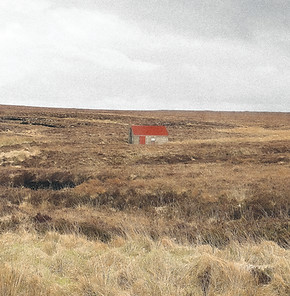dùthchas | taigh is tìr.
This architectural project is deeply personal to me and works to address the socio-cultural and environmental challenges facing the Outer Hebrides by reconnecting people to the land through architecture. Set along the western loop of the Isle of Lewis, the project is centred around three main interventions: a creative studio to foster local craftsmanship, an observatory and archive to record and protect Hebridean heritage, and a revival centre to sustain and revitalise traditions such as crofting, storytelling, Gaelic, and peat cutting. Supporting these hubs are smaller, temporary buildings that form a network across the island, including an Àirigh as an artistic retreat and a recording network integrated with the existing Four Winds bus shelters. The project is designed to reflect the landscape, record its cultural history, and revive local traditions, offering a sustainable vision for the future of the Hebrides and its people. Through these architectural interventions, the project aims to ensure that the voice of the Hebridean community is preserved, and their cultural practices are revitalized for generations to come.
Throughout the project I decided to use hand drawing as much as I could, in a sense the resulting drawings would carry a piece of the heritage aspect of the project which was so important to me. This was furthered through the use of archival and site images to create collage visualisations, therefore the project is through my own personal lens to a high extent.
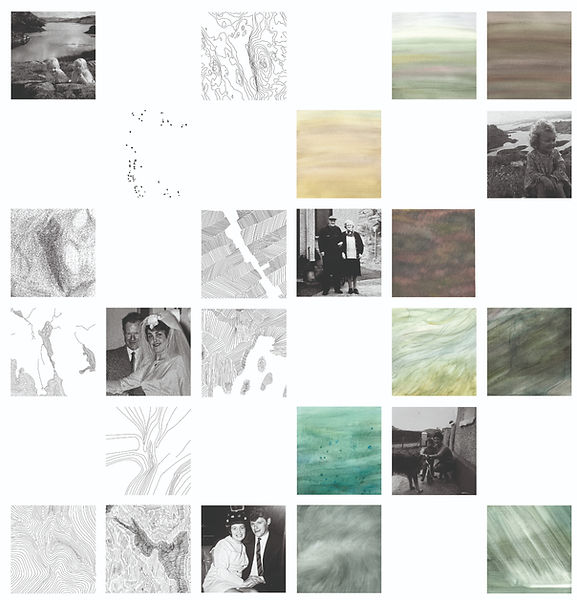
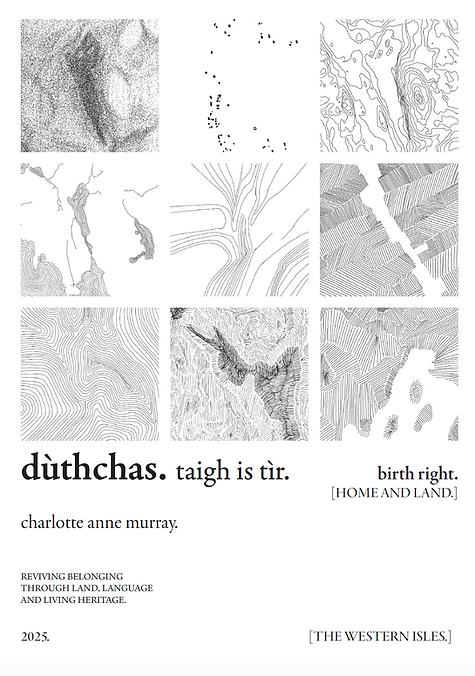
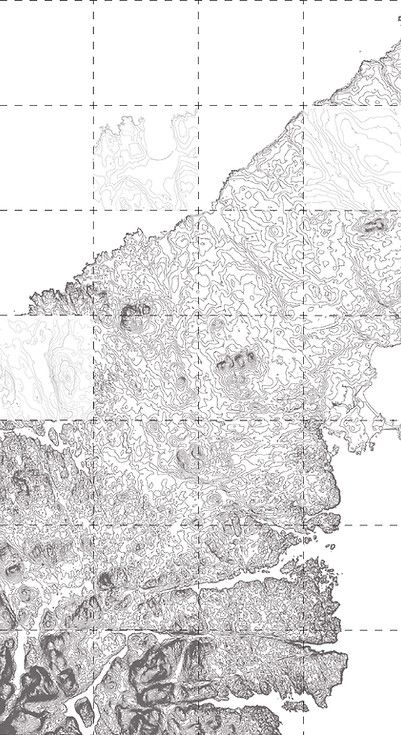
record.
reflect.
revive.
record.
Shawbost represents a landscape where land meets the Atlantic with force and permanence. Defined by rocky coastlines and vast open skies, it is a place where the natural elements have sculpted both the geography and the people. This site was selected not only for its raw physical beauty but because it holds personal significance tied to paternal lineage, heritage held within the rugged cliffs and salt-laden winds. Shawbost symbolises resilience, the need to endure in the face of constant exposure to the elements, an idea mirrored in the strong community ties that have historically sustained island life. Choosing Shawbost recognises the importance of heritage lived at the edge, where cultural memory and the wildness of place are inseparable.
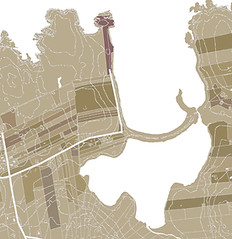
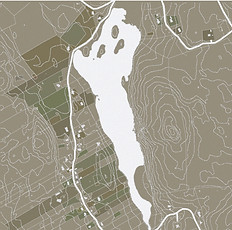
reflect.
Set against a backdrop of rolling hills and centred around a serene loch, Tolsta Chaolais embodies a sheltered, intimate connection between people and land. The choice of this site is deeply rooted in personal heritage; my maternal lineage traces directly to this village. Here, the crofting way of life was intimately tied to the natural rhythms of the landscape, where land and community formed a mutually sustaining bond. The gently enclosed topography creates a sense of protection and belonging, which mirrors the collective memory of close-knit Gaelic communities. In choosing Tolsta Chaolais, the project honours this enduring relationship, seeking to revive the land as a living space of memory, resilience, and daily life.
revive.
Barvas Moor stretches outward with a profound openness, characterised by vast expanses of deep peatland and the muted tones of heather, moss, and stone. Unlike the enclosed intimacy of Tolsta Chaolais or the dramatic meeting of land and sea in Shawbost, Barvas embodies the elemental vastness of Lewis. This landscape type reflects a different form of memory: one that is wide, communal, and shared across distances, evoking the historical crofting practices that once flourished here. By choosing Barvas, the project acknowledges the understated but vital role that moorland has played in shaping Hebridean life, and the physical embodiment of memory within the peat banks; sustaining communities through grazing, peat cutting, and shared stewardship of the land. It is a landscape that demands a deep reading of place, patience, and mutual reliance.
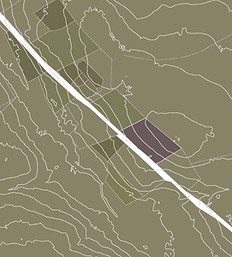
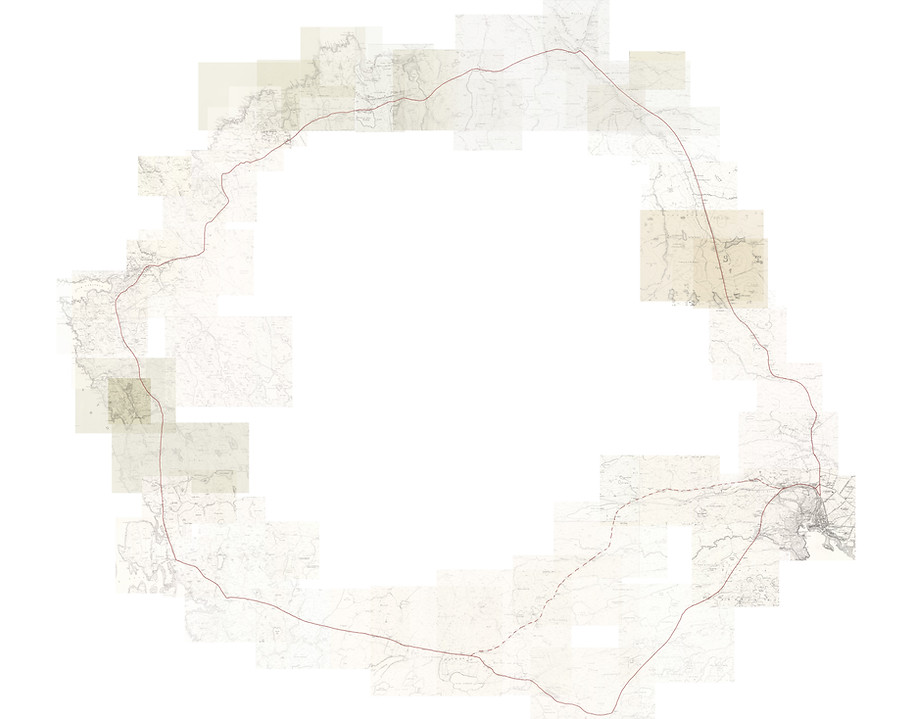
record.
reflect.
revive.
the central loop strategy
revive.

Revive is a response to a growing grassroots call across the Outer Hebrides to reconnect with endangered traditions; crofting, gathering, the Gaelic language, and storytelling. Rather than preserving culture as static memory, Revive creates a space for it to be actively sustained, adapted, and celebrated.
Situated within the moorland expanse, the building draws from island vernacular: monolithic walls recall ancient standing stones and crofting ruins, offering a permanent yet flexible framework. These walls ground the structure in heritage, while the infill between them is left open for evolving community use, from workshops and exhibitions to ceilidhs, harvest festivals, and forums on land rights.
Revive champions intergenerational learning, hosting hands-on experiences in storytelling, peat cutting, and other traditional skills. It fosters a deep reconnection between land, language, and labour, envisioning a future where young islanders can stay and thrive.
The centre prioritises local agency and redefines tourism as respectful witnessing rather than cultural consumption. Over time, the structure will shift with the community’s needs, enduring, weathering, and ultimately becoming a new type of ruin: not a monument to loss, but to regeneration. Revive is a beacon of cultural resilience, rooted in the past, shaped by the present, and oriented toward a hopeful, self-determined future.








reflect.

The Reflect building is situated inland, positioned to support intergenerational learning and craft, it links to the revive strategy by reactivating croft 6 which contains two ruins. It is a place where memory becomes method: skills like weaving, dyeing, storytelling, and Gaelic orature are passed on through making. The architecture blurs exhibition and workshop space, echoing how human and craft life once coexisted. Constructed using hempcrete and wool insulation from a revitalised crofting strategy developed through the thesis, it is materially rooted in crofting tradition. The croft lines are used and taken through to shape directional windows in the space, linking to the view that the landscape is, in itself, art. By encouraging islanders to be the narrators of their own culture, the Reflect building counters the tourist gaze and external narratives. The design encourages tactility, slowness, and shared knowledge, qualities often overlooked in contemporary education spaces. As part of the wider framework, Reflect reinforces that cultural continuity comes from practice, not preservation.
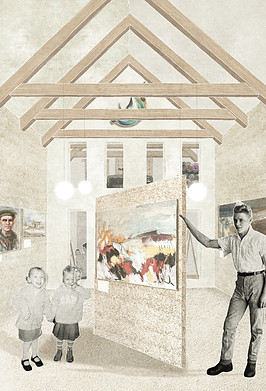







record.

The Record building is embedded in the coastline near South Shawbost, positioned low in the landscape and partially submerged to mirror the act of archiving and concealment. This space is dedicated to environmental and oral history recording, functioning as a research outpost, archive, and observatory. Designed with restraint, its form takes cues from traditional blackhouse walls made with local stone, and low-lying within the land. The building contains small, adaptable research labs and gathering spaces, encouraging collaboration between scientists, artists, and locals. The surrounding landscape is activated through external markers and weather monitoring tools, reinforcing the idea that record-keeping is both a scientific and cultural act. The journey to this site is intentionally exposed, requiring movement through open terrain to reinforce the idea that understanding the land must come through experience. Inside, the building is quiet, textural, and slow, a counterpoint to the urgency of cultural loss.
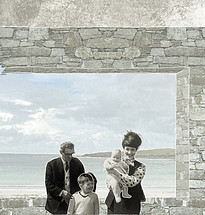
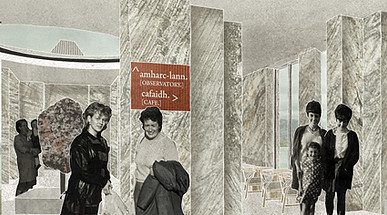




the networks.
networks are proposed along the central loop. a repurposing of the hebridean bus shelter is utilised to record weather and oral history, reinterpretations of the traditional àirigh are placed temporarily, with light touch on the land and used for local creatives to reflect their interpretations of the land. finally revival of abandoned buildings, aligned through touches of red, as seen through the proposal of the reflect croft.
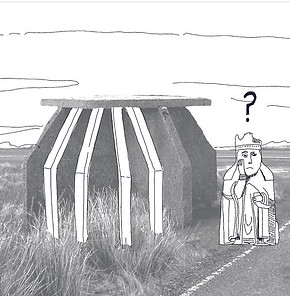
record.
![scan_qwb19146_2025-02-21-15-13-17[71].jpg](https://static.wixstatic.com/media/dd61c6_8da729cb37dc4a5abd360b39a58cd900~mv2.jpg/v1/crop/x_0,y_375,w_3852,h_3935/fill/w_290,h_296,al_c,q_80,usm_0.66_1.00_0.01,enc_avif,quality_auto/scan_qwb19146_2025-02-21-15-13-17%5B71%5D.jpg)
reflect.
